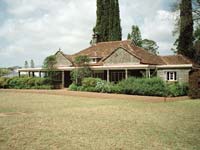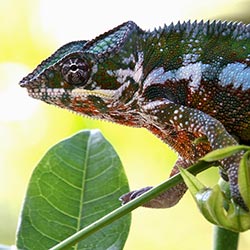Things to do in Nairobi, KENYA
Nairobi is a city of contrasts infused with ancient traditions, frenetic growth and an insatiable energy.
Social and economic issues do still exist within the make-up of the city, but the bustling capital of Kenya is now a modern economic powerhouse, leaving an unsavory reputation in the past, and demonstrating everything which makes a visit to East Africa so appealing.
An inspiring metropolis with leafy green suburbs, Nairobi has so much to offer, from unique wildlife encounters and National Parks, to authentic cultural experiences and fascinating museums. Negative connotations and critical media have dominated this city in the past, but today it offers a gateway to the most prosperous pocket of East Africa, and a truly unforgettable experience.
1. The Karen Blixen Museum


Surrounded by wildlife and nestled in the hills of Ngong, the home of Karen Blixen was once an isolated farm in the heart of an African landscape.
A century has passed since the infamous Danish writer lived in this quaint, beautiful house.
But while the urban sprawl of Nairobi has claimed this area as part of the city, the Karen Blixen Museum is still an incredible insight into another time in Africa: when exotic wildlife roamed the boundaries of civilization, and a peaceful serenity drifted across the plains.
Out of Africa was the major 1985 motion picture—starring Robert Redford and Meryl Streep— which followed the author’s biography, but it is not essential to know this story to understand what is so special about a visit to the museum.
Antique furniture and elegant portraits adorn the interior walls which evoke vivid imagery of the times when Europeans first arrived to settle in the rich surroundings, while blossoming flowers, towering acacia trees and luscious green consume the surrounding gardens. There are few places in Nairobi which offer such an authentic experience, in which you can sit on a veranda with afternoon tea, and be transported back through time to when the area was entirely unspoiled.
The Karen Blixen Museum was initially a coffee farm and an original 19th Century building, although today it belongs to the National Museums of Kenya.
High tea with sandwiches, cakes and coffee is available in the afternoon, and a tour guide is always on hand, should you need further information on the house, the history or flora in the peaceful gardens.
where? Karen Road, Langata, Nairobi 00100, Kenya
when? Late morning or early afternoon is the best time to visit the Karen Blixen museum, at which time you can avail of the delightful afternoon tea and sandwiches, before most of the visitors tend to arrive.
£$€¥ $11 per person or 1200 Kenya Shillings
2. Sheldrick Elephant Orphanage & Langata Giraffe Sanctuary
Witnessing a local wildlife keeper interacting with an orphaned baby elephant is one of the most sincere and heart-warming experiences you can expect on a trip to Africa.
And if that's not enough, on the very same day, you can stand face-to-face within an inch of the gentle giant of Africa, the Rothschild giraffe.
David Sheldrick Elephant Orphanage
David Sheldrick, whose name now synonymous with East Africa, was a founding warden of the infamous Tsavo National Park and dedicated much of his lifetime to conservation and wildlife protection in Africa.
The Elephant Orphanage was established in memory of these efforts by his wife Daphne, and today it is home to not just elephants but many other orphaned animals such as the endangered rhino.
For a small donation, the Orphanage now welcomes visitors to attend daily feeding time in which the local keepers will also interact with the elephants, whilst speaking about each of their personalities.
Many people will arrive for an opportunity to get up close to the animals, but what can be taken from this experience far exceeds expectations.
Witnessing the care given to these animals, the bond between keeper and elephant, and the genuine efforts made by the organization to protect the wildlife is worth more than any donation, or any effort it takes to be there.
Langata Giraffe Sanctuary
Langata Giraffe Sanctuary is quite close to the Karen Bixen Museum and situated in another suburb of Nairobi which feels very different to the urban sprawl that follows.
A quaint cafe and souvenir shop marks the entrance to the sanctuary (which can feel slightly touristy). But once inside, an educating and extremely interesting encounter ensues.
Entrance to the Langata Giraffe Sanctuary includes a presentation, where the guide will showcase every species of giraffe on the African continent, along with outlining the immense efforts being made by the sanctuary toward conservation.
Following this fascinating narrative, visitors are invited to a wooden balcony, where giraffes are usually waiting and more than happy to interact with the people. Not many places in the world will allow for such a unique experience, and its not every day that you can kiss a giraffe—something the guides encourage.
While these two attractions are in separate locations, they can both be visited in the same day and each of them is extremely worthwhile.
when? Visit the elephant orphanage prior to 11am for feeding time, and the Giraffe Sanctuary in the late afternoon, to avoid the many school trips which arrive during the morning.
£$€¥ Elephant Orphanage $10 (donation) / Giraffe Sanctuary $8
3. Lake Naivasha & Elsamere
A visit to Lake Naivasha and Elsamere is the ultimate day trip from Nairobi.
Lake Naivasha
Following an incredible scenic drive over the Great Rift Valley, Lake Naivasha appears like an Oasis on the endless Savannah, teeming with wildlife and luscious natural scenery, if you want to feel immersed in typical African surroundings, this is the perfect place to do so.
An area illuminated by rose carnations, towering acacia trees and green expanses, Naivasha has a serenity akin to the few isolated places which still exist in East Africa; where local fisherman are eager to take visitors out on the lake and where hippos co-exist with the many locals who live on the shores of the lake.
It seems impossible that so much attraction can be found in the one area, but Lake Naivasha is almost like a natural sanctuary, where animals are left in peace, and the flora is left to grow.
Elsamere
Many years ago, George and Joy Adamson brought the eyes of the world to Naivasha, when a story circulated about a lion living with a local family. The Adamsons had adopted a lion cub, and raised it in the lush surroundings of their home.
While there are now private estates for lion breeding in Africa, this was truly a sensational story at the time, and remarkable given how they were able to raise such a magnificent specimen.
Elsa was the name of the lion, and today Elsamere is the name given to the house and surrounding area. No trip to Naivasha is complete without hearing the full story, witnessing the beautiful setting in which is happened, or enjoying the delicious afternoon high tea and cakes provided in the gardens.
With hundreds of bird species flying through the air, and majestic colobus money's hanging from the trees overhead, Elsamere and Lake Naivasha is the most memorable day trip possible from Nairobi.
where? Lake Naivasha is about 100 kilometres from Nairobi, a drive which takes a minimum of 2 hours.
when? Arrive in Naivasha early morning for the boat trip and then visit Elsamere for high tea at 4pm.
£$€¥ U$10 entrance to Elsamere; U$10 local boat trip at Naivasha; $100 car rental or $5 bus journey.
4. Kibera Slum tour
Wildlife, enchanting landscapes and meeting the local tribes people are all important parts of a trip to Africa.
But issues such as poverty, disease and inequality still cast a dark shadow over most African communities, with Nairobi being no exception.
A visit to the Kibera Slum to take a tour of one of these communities is an essential part of a trip to Africa, and it certainly provides an opportunity to better understand the harsh conditions and struggle that many less fortunate locals are forced to endure.
It may seem as though such a tour will be depressing, pitiful and dangerous, but despite the obvious sad nature of Kibera, a tour of the slum is an intriguing and surprisingly uplifting experience.
Meeting the locals of Kibera, and witnessing the determination and positive outlook held by the people in the region, is both inspiring and eye opening.
And it brings more perspective to life than any safari could ever do.
when? Mid morning when you can possibly visit a school in the community.
£$€¥ Kibera slum tour US$25 per person / 2500 Kenya Shillings
5. The Nairobi National Park
Most visitors arrive in Nairobi with every intention of visiting the famous Mammas Mara, a world-renowned National Park just south of the capital.
However, as much as a trip to the Mara is highly recommended, this means that many visitors miss the National Park within the city boundary—perhaps thinking it can offer no more than Mara.
This is a big mistake. Nairobi National Park offers an incredibly unique and personal wildlife experience which is very different to the Maasai Mara, and a far more comfortable experience.
In fact, within minutes of leaving downtown you can find yourself surrounded by nature, confronted by a pride of lions and feeling nowhere near a city at all.
Shiny skyscrapers on the Nairobi cityscape can sometimes provide a unique photo opportunity for capturing a giraffe crossing a luscious terrain, but the sheer scale of the park also ensures you can escape this skyline completely, and replace it with an authentic African savannah.
Many species of birdlife are present, but the park is most popular for the more endangered or less common animals such as the black rhino, hippo, lion, hyena, or giraffe.
While sightings are never guaranteed, one of the main benefits of visiting the park is in that it is usually quite easy to locate the animals given that they are confined to an area which is tiny in comparison with the immense Maasai Mara.
Regardless of whether you see everything, Nairobi National Park still offers a magical wildlife experience surrounded by stunning landscapes.
While it is relatively easy to rent a vehicle and self-drive through Nairobi National Park, one must remember that most vehicles and not suitable for safari. The view won't be as good as on a purpose-built safari vehicle, and you'll miss the benefits of an experienced guide.
So it is probably best to book through a local tour operator.
where? The Nairobi National Park is found 10 kilometres south of the city centre.
when? A visit to Nairobi National Park is best when the animals are most active, and this means arriving early, when the park opens at 6am.
£$€¥ Park entrance is $50 per person. Rental car approx $100 per day.


















